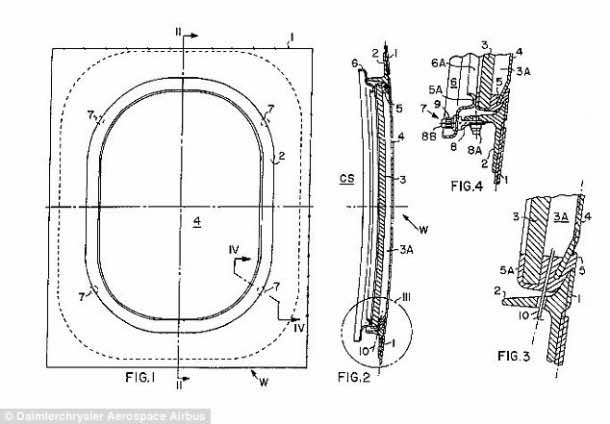For all those who have traveled in an airplane, you might have pondered upon the question of why is there a hole at the bottom of an airplane window. It is a common feature of passenger planes and Director of Technology, Marlowe Moncur, from GKN Aerospace explained its importance. It is part of the safety features of the aircraft. The hole is responsible for regulating the pressure within the cabin.

The ‘breather hole’ works as a bleed valve. According to a patent that was filed by Daimlerchrysler Aerospace Airbus in 1997, this ‘air conduit’ maintains ‘external atmospheric pressure inside’ the panes. The air is pressurized by engines which compress it so as to create the thrust. This pressurized air is held inside the cabin with an outflow valve.
Sensors ascertain how much of pressure is in the cabin and this valve (the hole) then releases air at a maintained rate so as to keep the pressure at a specified level. The valve is open when the plane is stationary and begins to close once the plane has taken off. The air at the sea level is at 14.7 PSI and a conventional flight travels at a height that is between 9,150 and 12,200 meters. Pressure drops to 4.3 PSI at this height and since oxygen is available in low quantity at high altitudes the plane’s cabin has to be pressurized for safety and comfort of passengers.
Philip Spiers, Head of Advanced Structural Testing Centre at the University of Sheffield Advanced Manufacturing Research Centre (AMRC) with Boeing said, “at high altitudes there are not enough oxygen molecules to sustain life. Low pressure lowers the boiling points inside the body and at the edge of space, this can cause blood and tears to boil.”
He further added, “Planes have a higher pressure inside than outside. It’s like a bottle of Coca-Cola – shaking a bottle makes it go stiff and hard but when you undo it, it becomes floppy again. This stretches the skin around the plane.” The pressure inside the cabin is maintained at 11 PSI – same level of pressure experienced at around 2,130 meters.
“If the pane was sealed [and didn’t have a hole in it], all the pressure in the cabin would act on the inside pane of glass,” further added by Mr Spiers. “You want [this pressure] to act on the outside pane because if there is a problem with the outside it would be possible to see it during inspection. If this pressure blows that pane out, the inside pane is still strong enough to hold the pressure. You don’t want to see the inside pane fail first as the inspectors wouldn’t see that. Plus, this gives enough time for the plane to drop to a lower altitude to manage the issue.”
Michal Weiszer, research fellow at the School of Engineering at the University of Lincoln added, “During flight, the cabin is pressurized and therefore it is necessary to equalize the pressure between the inner pane and the actual window, so the outer window holds the load of the pressure difference. Furthermore, the hole prevents from moisture building up between the panes.”



Wow!! saw it many times but wasnt aware..but now the concept is clear!!
great informations